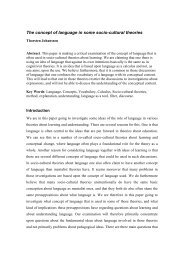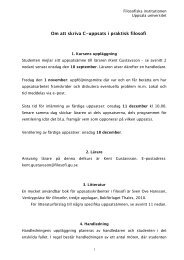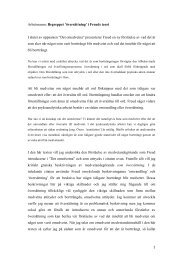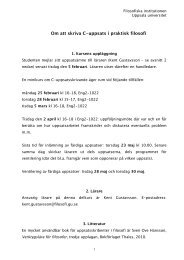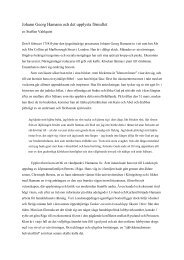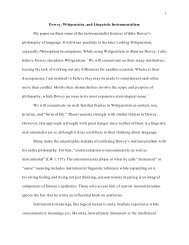Formal Logic, Models, Reality
Formal Logic, Models, Reality
Formal Logic, Models, Reality
Create successful ePaper yourself
Turn your PDF publications into a flip-book with our unique Google optimized e-Paper software.
5. What to Do Instead?5.1 <strong>Logic</strong>. Observation 1.3 shows that a logic which can be applied directly to realitymust be a non-formal logic of the sort used when we reason in a natural non-formallanguage. <strong>Logic</strong> has to do with thinking. When we think logically, we think correctly.When we think illogically, we think incorrectly. Thinking is problem solving inthe head. There can be no thinking without problems. Therefore a theory of problemsand problem solving is the right framework for the development of logic.5.2 DEFINITION (Problem). A problem is a quest for something determined by a setof conditions. Therefore a problem can be written as(C 1 , …, C n )where C 1 , …, C n are the defining conditions. A solution is anything which satisfiesthe conditions. Problems (quests) in this broad sense occur in all forms of life, fromthe lowest to the highest. In thinking, the quest is for information.5.3 Problem <strong>Logic</strong>. I indicate some features of a logic developed within the frameworkof a problem theory.(I) Conditionals. A non-formal conditional 'if A then B' is the solution to a problem(C 1 , …, C n ) if the modified problem (C 1 , …, C n , A) has B as its solution. Theanalysis in Hansen (1996b) shows that the functional relations which take us fromthe conditions C 1 , …, C n , A to B must be functions at the object level, that is, at thelevel determined by the conditions C 1 , …, C n , and not, as in formal logic, truthfunctionalrelations at the object-language level, that is, one level above the level determinedby C 1 , …, C n . As a consequence, the implication paradoxes of formal logicare avoided.(II) Disjunctions. A disjunction arises from alternative solutions to a problem. Forinstance, if (C 1 , …, C n ) has A and B as its all and only solutions, then 'A or B' expressesjust that, and 'A or B' is the complete solution to the problem. Thus 'A or B'gives an exhaustive and exclusive list of solutions to a problem which is understoodin the context. This solves Ross's paradox and other paradoxes of disjunction in formallogic.5.4 PROBLEM. If thinking is problem solving in the head, does not that exclude thatthe problem logic can be applied directly to reality? Must not all such supposed applicationsrather be to phenomenological models of reality in our minds?20



